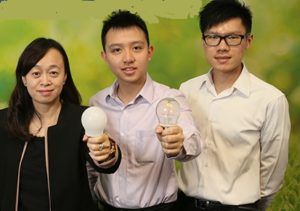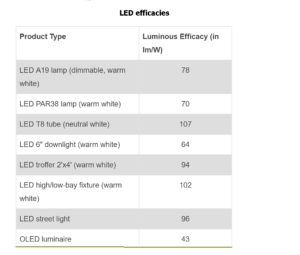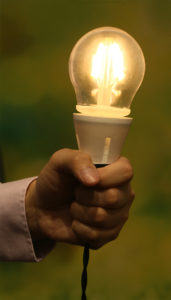 Researchers at the Hong Kong Polytechnic University claim to have developed the most energy-efficient Light Emitting Diode (LED) filament technology yet. Bulbs devised at the HKPU lab have a luminous efficacy of 129 lm/W.
Researchers at the Hong Kong Polytechnic University claim to have developed the most energy-efficient Light Emitting Diode (LED) filament technology yet. Bulbs devised at the HKPU lab have a luminous efficacy of 129 lm/W.
To be clear, the new bulbs employ LEDs shaped to look like the filaments of an incandescent light bulb. The light bulb is supplied with electric current by feed-through terminals or wires embedded in the glass. In contrast, ordinary LED bulbs generally position the LEDs on a flat plate inside a frosted plastic dome. The appeal of the filament LED version is that it looks more like the incandescent bulbs of old.

Limitations of traditional LED lamps have included high production costs and a narrow beam angle. The new LED filament bulb has a 300° beam angle, roughly the same as that for incandescent bulbs. Its color rendering index (CRI) is about the same as well, so the bulbs give off a relatively warm light characteristic of incandescents.
One reason for the bulbs’ high lumen efficiency is that the LEDs give off less light in the UV range. Lumen efficacy depends to a strong degree on the spectrum of the light coming from the source. Additionally, the bulbs use aluminum as substrate material rather than the usual sapphire or ceramics. Aluminum has good thermal conductivity, high reflectivity, and is affordable, researchers say. The LEDs also mount to both sides of the aluminum substrate. Researchers use numerous low-power LEDs in the filament bulbs rather than a few higher power devices, a practice that reduces energy loss and generates a more even light diffusion without affecting luminosity.

An advanced injection molding technology is used to create a seamless and transparent spherical plastic case for the bulb which makes the 300° beam angle possible. And apparently, researchers convert the ac mains power to dc for the LEDs without employing a conventional ac/dc converter circuit.
Researchers say they’ve applied for patents and have completed the prototype design. Next the team will conduct various tests and obtain certifications for market launch.


Leave a Reply